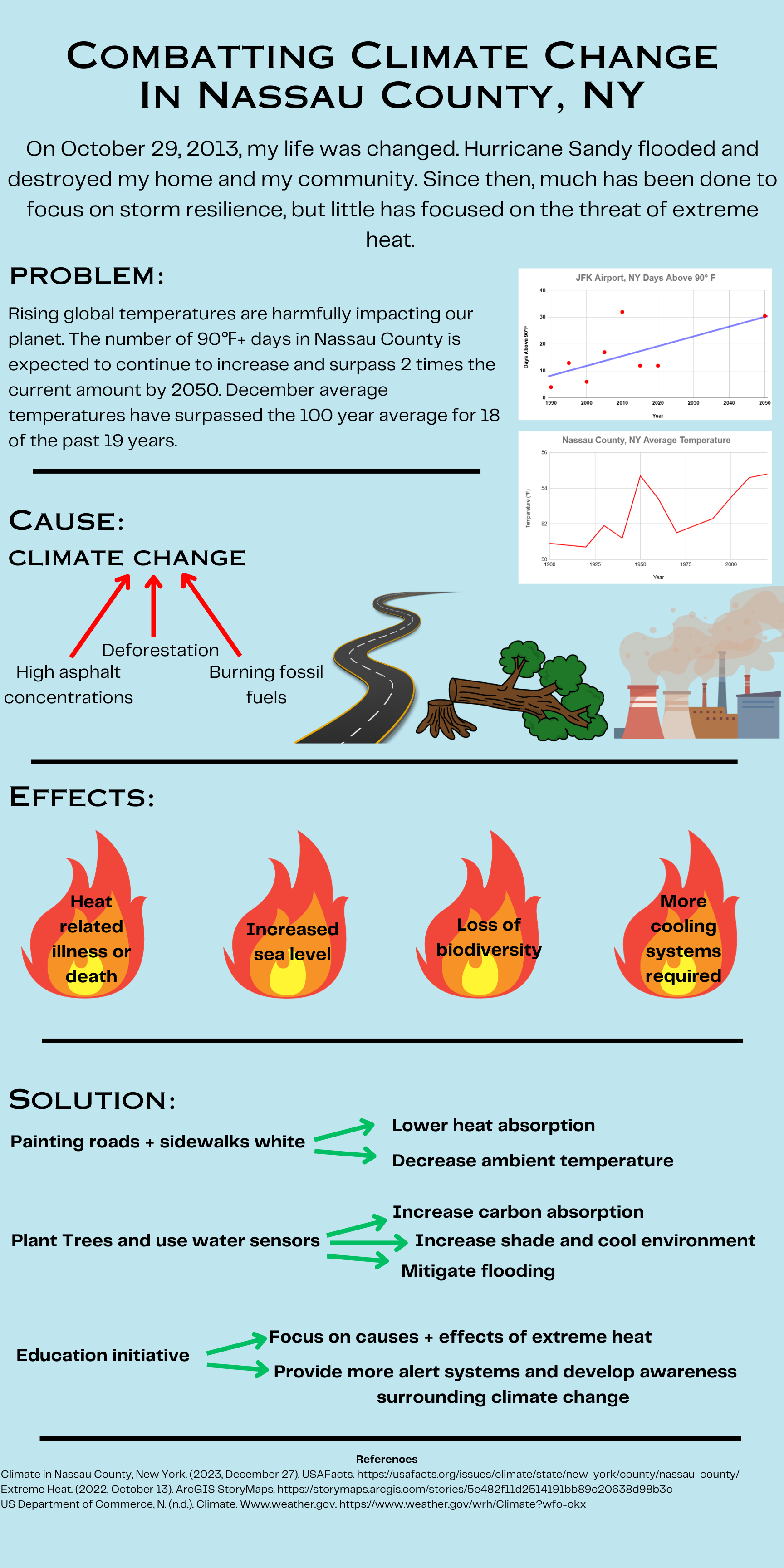Nassau County is home to a variety of animal and plant species, which rising heat levels are negatively impacting. The number of 90°F+ days annually averages 13 but is expected to reach 30.5 days by 2050. Consequences include increasing sea levels, rising water temperatures, loss of biodiversity, and serious illness/death in humans. To combat this problem, a three-tier plan must be implemented focusing on roads and conservancy. The vast majority of roads are asphalt blacktop, but this color absorbs heat. As light colors reflect more radiation and cool areas down, my plan includes painting roads white, beginning in small community locations. Additionally, planting more trees will help solve the problem surrounding extreme heat. After Hurricane Sandy, which devastated my community and flooded my home, trees were destroyed by wind and flooding salt water. Planting new trees will not only quickly reduce temperatures, but will improve water infiltration (reducing flooding), improve air quality by trapping pollutants, and will sequester carbon dioxide which may lead to longer term cooling. Lastly, an education initiative in schools and community centers will promote reducing fossil fuels and deforestation, while also increasing responsiveness to heat related weather warnings, combatting this impending crisis.
Contact us
Thank you for your interest in contacting Future Engineers. We look forward to connecting with you!
General Inquiries
support@futureengineers.orgSponsorship Inquiries
sponsor@futureengineers.org
